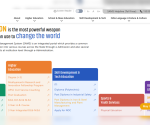Boost your confidence at home: 9 public speaking tips every student should try – Times of India

Public speaking can feel like a daunting challenge for many students. Whether it’s presenting in front of a classroom, delivering a speech for a competition, or answering questions during a discussion, the fear of stumbling over words or forgetting your lines can be overwhelming. The good news is, you don’t need a big stage or a large audience to get better. In fact, some of the most effective public speaking practice happens right at home.Here are nine effective ways for students to learn and practice public speaking at home.
Practice in front of a mirror
One of the simplest yet most effective ways to improve your speaking skills is to practice in front of a mirror. This allows you to see exactly what your audience would see. As you speak, pay attention to your facial expressions, posture, and gestures. Are you smiling when appropriate? Are your hand movements natural, or are they distracting? Watching yourself in real-time helps you become more self-aware and encourages you to adjust your body language to better match your message.You don’t need to memorise your speech at first. Start by talking about a topic you enjoy, like your favorite movie, a book you recently read, or even what happened during your day. The goal is to feel comfortable and confident seeing yourself speak.
Record yourself and watch the playback
Recording yourself may feel awkward at first, but it is incredibly helpful. When you watch the video playback, you’ll likely notice things you didn’t realise while speaking. Maybe you speak too quickly, avoid eye contact, or use filler words like “um,” “like,” or “you know” more than you thought.Start by recording short videos—one to two minutes long—on your phone or computer. Watch them with a critical but kind eye. Make notes about what worked and what you’d like to improve. Over time, you’ll notice progress, and that alone can be a huge confidence booster.
Read aloud every day
Reading aloud might sound basic, but it’s a powerful tool to improve pronunciation, fluency, and pacing. Choose materials that interest you—novels, news articles, poetry, or even your own school essays. Read slowly and clearly, focusing on enunciation and expression. Try to imagine you’re reading to a class, not just to yourself.As you get more comfortable, start reading aloud with emotion. This helps you develop the ability to convey meaning and feeling through your voice, a critical skill in effective public speaking.
Use online tools and apps to get feedback
There are many digital tools specifically designed to help people improve their public speaking. Apps like Orai, Speeko, and PromptSmart analyse your voice and give you feedback on things like pace, filler words, clarity, and energy.Some apps offer virtual reality practice environments or AI-driven simulations where you can deliver a speech to a fake audience and get realistic feedback. These tools are especially useful if you’re a student preparing for debates, interviews, or competitive events.
Talk to yourself
Yes, talking to yourself can be a great way to practice speaking. This doesn’t mean rambling aimlessly, but rather practicing structured thoughts out loud. For example, explain a concept you learned in class, or describe how you would respond to a certain question in an interview. Pretend you’re teaching someone else the material. This not only helps reinforce your understanding but also builds your confidence in expressing ideas clearly and effectively.Talking out loud also makes you more comfortable with your own voice, which is important because many people dislike how they sound until they get used to it.
Watch and learn from great speakers
Studying experienced speakers can inspire and teach you. Watch TED Talks, speeches by famous leaders, or student presentations online. As you watch, observe how they open and close their speeches, how they use pauses, and how they emphasise key points. Notice how they use gestures to support their words rather than distract from them.Once you’ve watched a speech, try summarising it aloud or practicing delivering part of it yourself. This helps you internalize strong speaking techniques and begin applying them to your own style.
Improve your breathing and posture
Good breathing supports a strong, steady voice. Nervous speakers often breathe shallowly or speak too quickly, which can lead to shortness of breath and more anxiety. Practicing slow, deep breathing before and during speaking can help you stay calm and grounded.Posture also plays a major role. Standing up straight with your shoulders relaxed and your head held high not only helps your voice carry better but also makes you feel more confident. Try a few minutes of deep breathing and posture practice each day—it’s a small habit that makes a big difference.
Create a mini stage at home
Turning a part of your home into a “stage” can help you take your practice seriously. You don’t need anything fancy—a small space with enough room to stand and move will do. Stand up, hold your notes (if you have any), and practice delivering your speech as if there’s a real audience in front of you. You can even place some stuffed animals or family members in the audience if you want to make it more fun.By creating a sense of occasion, you train your mind and body to associate speaking with confidence and presence rather than nervousness.
Set realistic, achievable goals
Improvement takes time, so it’s important to set small, achievable goals. One week, your goal might be to eliminate filler words. Another week, you might focus on better eye contact or stronger openings. Don’t try to master everything at once.Track your progress in a journal or log. Write down what you practiced, what went well, and what you want to work on next. This helps keep you motivated and reminds you of how far you’ve come.
















